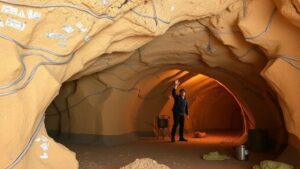Recovering Nautical Relics Along Shipwreck-Coastlines and Beaches
Recovering Nautical Relics Along Shipwreck-Coastlines and Beaches
The recovery of nautical relics from shipwrecks, coastlines, and beaches represents a fascinating intersection of archaeology, history, and marine science. By exploring the technologies used, the implications of such recoveries, and the ethical considerations involved, we can appreciate the complexities of this intriguing field. The report below unfolds these themes with relevant examples and case studies, demonstrating the value of these maritime treasures in enhancing our understanding of human history and culture.
The Importance of Nautical Relics
Nautical relics are artifacts, debris, or human-made objects recovered from shipwrecks and maritime settings. serve as crucial physical evidence of past maritime activities, shipbuilding techniques, trade routes, and cultural interactions. Also, they also provide insights into the technological capabilities of historical societies. According to the United Nations Educational, Scientific and Cultural Organization (UNESCO), more than three million shipwrecks lie underwater, representing a rich reservoir of knowledge waiting to be explored and understood.
Techniques for Recovery
Recovering nautical relics is an intricate process that involves various scientific and non-scientific techniques. e methods can be categorized into four main types: land-based recovery, underwater archaeology, remote sensing, and community involvement.
- Land-Based Recovery: This method typically involves searching beaches and coastlines where artifacts may wash ashore. Take, for instance, the annual Great Florida Treasure Hunt, where amateur and professional treasure hunters uncover coins, jewelry, and military artifacts, often from ships wrecked long ago.
- Underwater Archaeology: This technical recovery method employs divers and sophisticated equipment to excavate submerged wrecks. Notable expeditions include the retrieval of the RMS Titanic artifacts, which highlighted advanced specialized tools and techniques, such as remotely operated vehicles (ROVs) that can capture video and retrieve items from extreme depths.
- Remote Sensing: Technologies like side-scan sonar and magnetometers are employed to locate wreck sites without disturbing the underwater environment. For example, researchers utilized side-scan sonar to locate the wreck of the USS Indianapolis, revealing not just the ship’s location but also enabling the mapping of debris fields.
- Community Involvement: Engaging local communities in recovery efforts fosters educational opportunities and respect for local heritage. Events like “Beachcomber’s Day” in coastal towns encourage the public to report finds, augmenting archaeological datasets while promoting stewardship of maritime history.
Case Studies
Several noteworthy recovery efforts exemplify the variability in techniques and the significance of nautical relics. The excavation of the 17th-century shipwreck of the Whydah Gally is one prominent example. Found off the coast of Cape Cod, the vessel was associated with pirate Samuel Bellamy, and its excavation yielded thousands of coins and artifacts, demonstrating not only the wealth of maritime treasures but also the complexities surrounding pirate history and the transatlantic slave trade.
In contrast, the recent recovery of artifacts from the Spanish galleon Nuestra Señora de Atocha emphasizes the advantages of utilizing technology in underwater recovery. The Atocha sank off the Florida Keys in 1622, and its recovery operations employed advanced diving technologies, allowing teams to retrieve gold, silver, and emeralds estimated to be worth over $400 million today. This case illustrates not only the potential financial benefits of recovery but also the scholarly contributions it makes to our understanding of Spains maritime trade.
Ethical Considerations
With any activity involving the recovery of historical artifacts, ethical considerations play a critical role. First, the issue of ownership must be addressed–should recovered items belong to discoverers, the state, or the descendants of those whose vessels sank? Plus, the principles of stewardship outlined by the Archaeological Institute of America reflect a commitment to preserving artifacts in situ whenever possible, thereby maintaining the context from which they originated.
Also, there are concerns about looting and the commercial exploitation of wrecks, which often lead to the loss of historical context and cultural significance. The rise of the “treasure hunting” mentality poses a risk to archaeological integrity, as seen in illegal recoveries that remove items from their natural habitat without proper documentation.
Conclusion and Actionable Takeaways
The recovery of nautical relics holds considerable promise for advancing our understanding of maritime history and heritage. By employing a mixture of technology and community engagement, researchers can continue to uncover the layered stories behind shipwrecks and the treasures they contain. But, a strong ethical framework is necessary to guide these practices, ensuring that both the historical significance and integrity of the artifacts are preserved.
In pursuing nautical relics, consider the following actionable takeaways:
- Support local and national organizations committed to nautical archaeology.
- Engage in educational efforts surrounding maritime history to promote awareness and stewardship.
- Recognize the importance of ethical practices in recovery efforts, ensuring that context is preserved.
Exploring the vast waters for nautical relics connects us to our shared past and deepens our appreciation for the stories beneath the surface. Each artifact serves as a bridge to bygone eras, meriting diligent and respectful stewardship.



